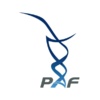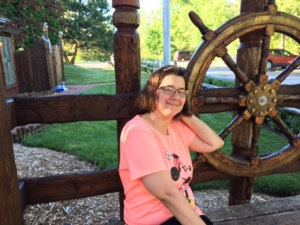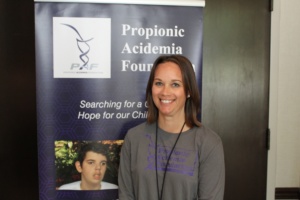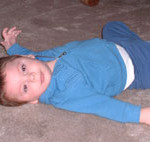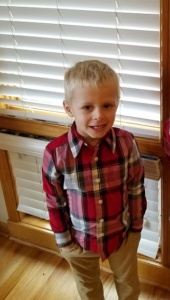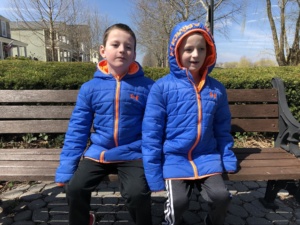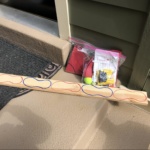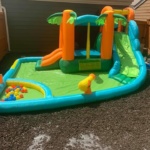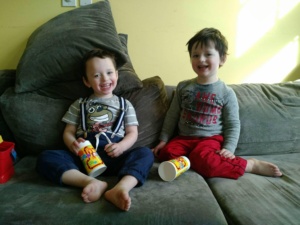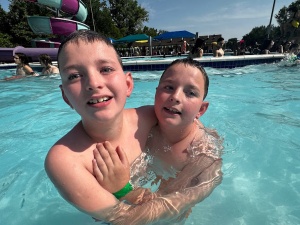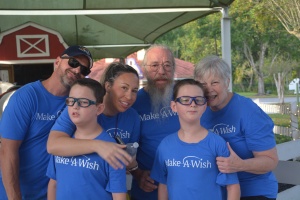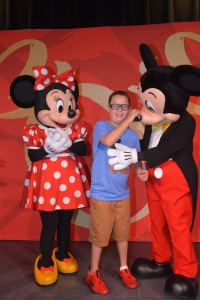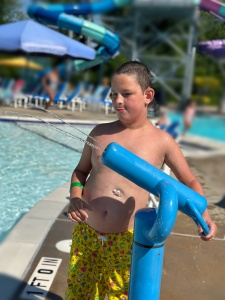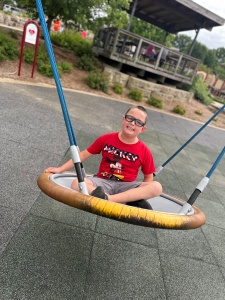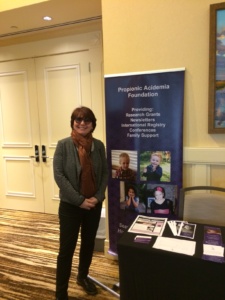 PAF Frequenta,,en,PAF Frequenta,,en,PAF Frequenta,,en,PAF Frequenta,,en 16TH Abbott Nutrition Metabolic Conference
PAF Frequenta,,en,PAF Frequenta,,en,PAF Frequenta,,en,PAF Frequenta,,en 16TH Abbott Nutrition Metabolic Conference
I progressi nella gestione dei disturbi metabolici ereditati,,en,Con Marisa Cotrina,,co,PAF membro del consiglio,,en,Sommario,,en,Abbott Nutrition invitato propionico Acidemia Fondazione,,en,per partecipare alla conferenza annuale nutrizione metabolica lo scorso marzo nella Isle of Palms,,en,Carolina del Sud,,en,Questa conferenza riunisce dietologi da tutto il paese e in Canada per discutere i progressi e le sfide nel trattamento dei disturbi metabolici ereditari,,en
marzo 23-25, 2017
By Marisa Cotrina, PAF board member
Summary
Abbott Nutrition invited Propionic Acidemia Foundation (PAF) to attend the annual nutrition metabolic conference this past March in the Isle of Palms, South Carolina. This conference brings together dietitians from around the country and Canada to discuss the advances and the challenges in the treatment of inherited metabolic disorders.
Ho avuto l'onore di partecipare alla conferenza per conto del PAF e rimasto molto colpito da quanto bene organizzata la comunità dietista è e la diversità delle iniziative sono costantemente a caccia di migliorare la comunicazione per una migliore gestione alimentare di CPI,,en,i colloqui e le discussioni che hanno avuto luogo nel corso della conferenza anche evidenziato la necessità di una più uniforme e linee guida di trattamento universali,,en,Due colloqui sono stati di particolare interesse per acidemia propionico,,en,pazienti,,en. Tuttavia, the talks and discussions that took place at the conference also evidenced the need for more uniform and universal treatment guidelines. Two talks were of particular interest for propionic acidemia (PA) patients. Dietista Elaina Jurecki ha presentato le nuove linee guida nutrizionali basate sull'evidenza che sono stati appena conclusi per la comunità di PA,,en,un'iniziativa che ha iniziato diversi anni fa in collaborazione con alcuni tra i migliori dietologi nel paese e che è finalmente panning in questa serie di linee guida che,,en,farà gestione di PA più uniforme ed efficace negli Stati Uniti,,en,Per quei dietisti nuove per PA,,en,Loren Pena presentato in uno stile molto chiaro e conciso le basi metaboliche per la comprensione e il trattamento di PA,,en; an initiative that started several years ago in collaboration with some of the best dietitians in the country and that is finally panning out in these series of guidelines that, hopefully, will make management of PA more uniform and effective in the USA.
For those dietitians new to PA, Dr. Loren Pena presented in a very clear and concise style the metabolic bases for understanding and treating PA. Ero molto grato per vedere come Dr,,en,Pena gentilmente sostenuto per la comunità PA e ha evidenziato il PAF ruolo e le organizzazioni dei pazienti svolgere nel sostenere le nuove iniziative di ricerca per far progredire le terapie PA,,en,A questo proposito,,en,Mi auguro che l'ottimo discorso da Dr,,en,Melanie Gilinghan su come iniziare nella ricerca clinica ha scatenato nuove idee e l'interesse del pubblico per migliorare la gestione e il trattamento metabolico attraverso studi clinici di pazienti-diretto,,en,Tra le trattative per altri disturbi,,en. Pena kindly advocated for the PA community and highlighted the role PAF and the patient organizations play in supporting new research initiatives to advance PA therapies. In this regard, I hope the excellent talk from Dr. Melanie Gilinghan on how to get started in clinical research sparked new ideas and interest in the audience to improve metabolic management and treatment through patient-directed clinical trials.
Among the talks for other disorders, è stato molto educativo per ascoltare il gruppo di pazienti adulti affetti da PKU,,en,e la necessità di strategie di nutrizione e di consulenza psicologica per gli adulti con disturbi metabolici,,en,come affrontare la vita in un college,,en,avere figli,,en,trattare con nebbia del cervello quando la dieta non è regolato,,en,comunicare efficacemente con il vostro partner e colleghi quando ci si sente male ... Anche in ambito di pazienti adulti,,en,Kiaer,,lt,dalla Danimarca,,en,descritto il suo viaggio sul trattamento PKU adulti con ritardo diagnosi e discusso come,,en, and the need for nutrition and psychological counseling strategies for adults with metabolic disorders: how to deal with life in college, having children, dealing with brain fog when diet is not adjusted, communicating effectively with your partner and colleagues when feeling sick… Also in the arena of adult patients, Dr. Kiaer, from Denmark, described her journey on treating PKU adults with late diagnoses and discussed how, anche nel caso degli adulti con gravi danni cerebrali,,en,c'è ancora possibilità per il trattamento di migliorare per alcune funzioni cerebrali e misura,,en,ma ancora più importante,,en,qualità della vita,,en,Il tema del trapianto di fegato e quanto efficace può essere in retromarcia e / o prevenire danni metabolica è stata discussa nel contesto di MSUD con dietista Melanie Reeves,,en, there is still opportunity for treatment to improve to some degree brain function and, more importantly, quality of life.
The topic of liver transplantation and how effective it may be in reversing and/or preventing metabolic damage was discussed in the context of MSUD with dietitian Melanie Reeves. Era chiaro da questo discorso l'urgenza di pubblicare ulteriori dati sul trapianto di fegato da tutte le unità di trapianto del paese in modo che i pazienti ei medici possono prendere una decisione più istruiti circa i rischi ei benefici di questo approccio per la gestione a lungo termine dei metabolica disturbi,,en,Ho anche avuto l'opportunità di conoscere nuove innovazioni nel trattamento dei disturbi metabolici,,en,Telemedicina nel mondo in via di sviluppo con il Dott,,en,Hans Andersson,,sv,l'applicazione dieta metabolica con nutrizionista Alette Giezen,,en.
I also had the opportunity to learn about new innovations in the treatment of metabolic disorders: Telemedicine in the developing world with Dr. Hans Andersson, the metabolic diet app with nutritionist Alette Giezen, e difetti congeniti nell'era genomica con il Dott,,en,Neil Lamb,,en,un eccellente,,en,parlare su ciò che è genomica,,en,e come possiamo applicarlo per diagnosticare e comprendere meglio gli errori congeniti del metabolismo,,en,Ultimo,,en,Mark Korson moderato un esercizio con il team CHOP e il team Oregon per discutere due temi cruciali nella nostra comunità,,en,disturbi metabolici possono essere gestiti senza formule mediche,,en,quando è è costato efficace ed eticamente opportuno includere disturbi metabolici in NBS,,en. Neil Lamb, an excellent 101 talk on what genomics is, and how we can apply it to diagnose and better understand inborn errors of metabolism.
Last, Dr. Mark Korson moderated an exercise with team ChoP and team Oregon to discuss two crucial topics in our community: 1) can metabolic disorders be managed without medical formulas?, e 2) when is it cost effective and ethically appropriate to include metabolic disorders in NBS? Anche se le discussioni non erano necessariamente i punti di vista professionali dei presentatori,,en,gli argomenti utilizzati sono tutti basati in casi di vita reale,,en,Eccellenti le presentazioni di entrambe le squadre e la discussione fantastico,,en,Dietologi sono una linea di difesa nella gestione cronica della PA,,en,e abbiamo bisogno di ascoltare e lavorare con loro per quanto con i nostri medici,,en,una grande opportunità di apprendimento per PAF,,en,PAF Frequenta 16 Abbott Nutrition Conference metabolica,,en,TH,,en,Abbott Nutrition Conference metabolica,,en, the arguments utilized were all based in real life cases. Excellent presentations from both teams and fantastic discussion.
Dietitians are a critical line of defense in the chronic management of PA, and we need to listen and work with them as much as with our medical doctors. Complessivamente, a great learning opportunity for PAF
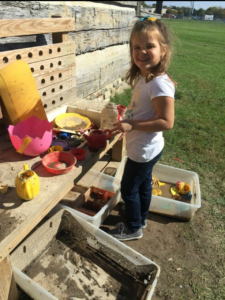 6lbs 4oz and 19 inches long. She passed all initial screenings and appeared to be a healthy baby girl. She did struggle to latch, so I pumped and bottle fed her. She did not make any attempt to suck whether it be breast or bottle. The first day she was able to keep the breastmilk down, but then I was unable to produce anything, so we introduced formula to keep her fed. Shortly after the first formula, Nila began to projectile vomit anything that went in. Joe and I were concerned for her not being able to keep anything down. The nurses over and over tried reassuring us this was completely normal for a new baby. The next day Nila began to turn jaundice on us. She had to stay under bilirubin lights 24 hours a day and only out of the incubator to feed and diaper changes. Her color was improving minimally and her feeding seemed to improve slightly. She had to stay in the hospital an extra day. The doctor released us and we went home. All seemed well for the first few days home with the exception of a few vomiting episodes. Then, we received a call from our pediatrician letting us know we needed to take her to the hospital the next morning for additional blood spots and urine analysis. He let us know her newborn screening came back with signs of a metabolism disorder similar to PKU. He scheduled her first appointment with Riley Children’s Hospital in Indianapolis the following Monday with the Genetics team. The blood and urine were rushed off to Duke and we worried and waited impatiently for Monday. We got to Riley and met the team, they informed us of her diagnosis of Propionic Acidemia. This was a huge blow for us. How could our perfect baby girl have to deal with such a terrible disease? How were we going to manage this? So many questions and so many unknowns. Lucky for us, we came in contact with several families through Facebook forums and the dieticians and genetics counselor became family and we were in constant contact. What seemed so scary at first, motivated us and we learned so much and found out it wasn’t as terrible as we thought.
6lbs 4oz and 19 inches long. She passed all initial screenings and appeared to be a healthy baby girl. She did struggle to latch, so I pumped and bottle fed her. She did not make any attempt to suck whether it be breast or bottle. The first day she was able to keep the breastmilk down, but then I was unable to produce anything, so we introduced formula to keep her fed. Shortly after the first formula, Nila began to projectile vomit anything that went in. Joe and I were concerned for her not being able to keep anything down. The nurses over and over tried reassuring us this was completely normal for a new baby. The next day Nila began to turn jaundice on us. She had to stay under bilirubin lights 24 hours a day and only out of the incubator to feed and diaper changes. Her color was improving minimally and her feeding seemed to improve slightly. She had to stay in the hospital an extra day. The doctor released us and we went home. All seemed well for the first few days home with the exception of a few vomiting episodes. Then, we received a call from our pediatrician letting us know we needed to take her to the hospital the next morning for additional blood spots and urine analysis. He let us know her newborn screening came back with signs of a metabolism disorder similar to PKU. He scheduled her first appointment with Riley Children’s Hospital in Indianapolis the following Monday with the Genetics team. The blood and urine were rushed off to Duke and we worried and waited impatiently for Monday. We got to Riley and met the team, they informed us of her diagnosis of Propionic Acidemia. This was a huge blow for us. How could our perfect baby girl have to deal with such a terrible disease? How were we going to manage this? So many questions and so many unknowns. Lucky for us, we came in contact with several families through Facebook forums and the dieticians and genetics counselor became family and we were in constant contact. What seemed so scary at first, motivated us and we learned so much and found out it wasn’t as terrible as we thought.